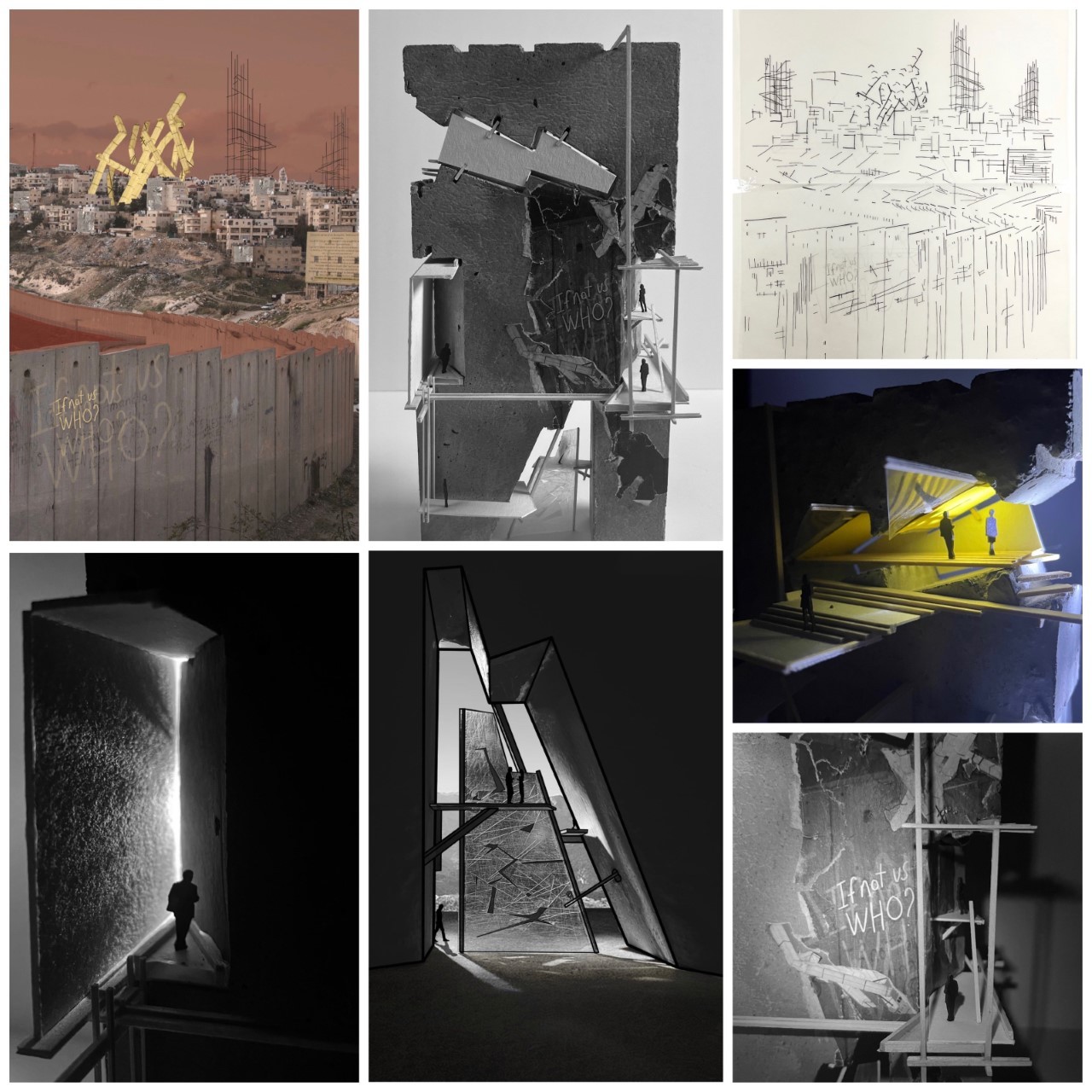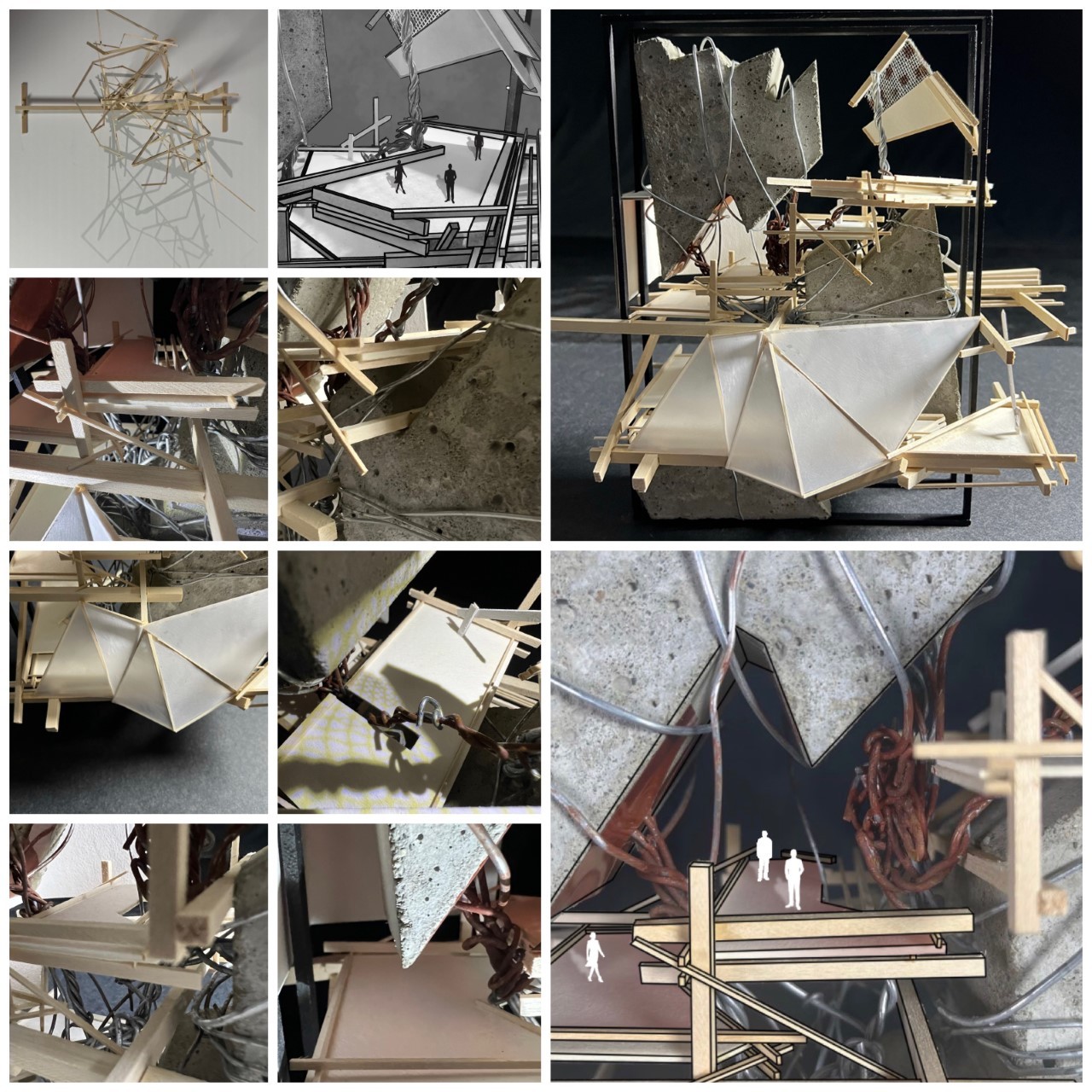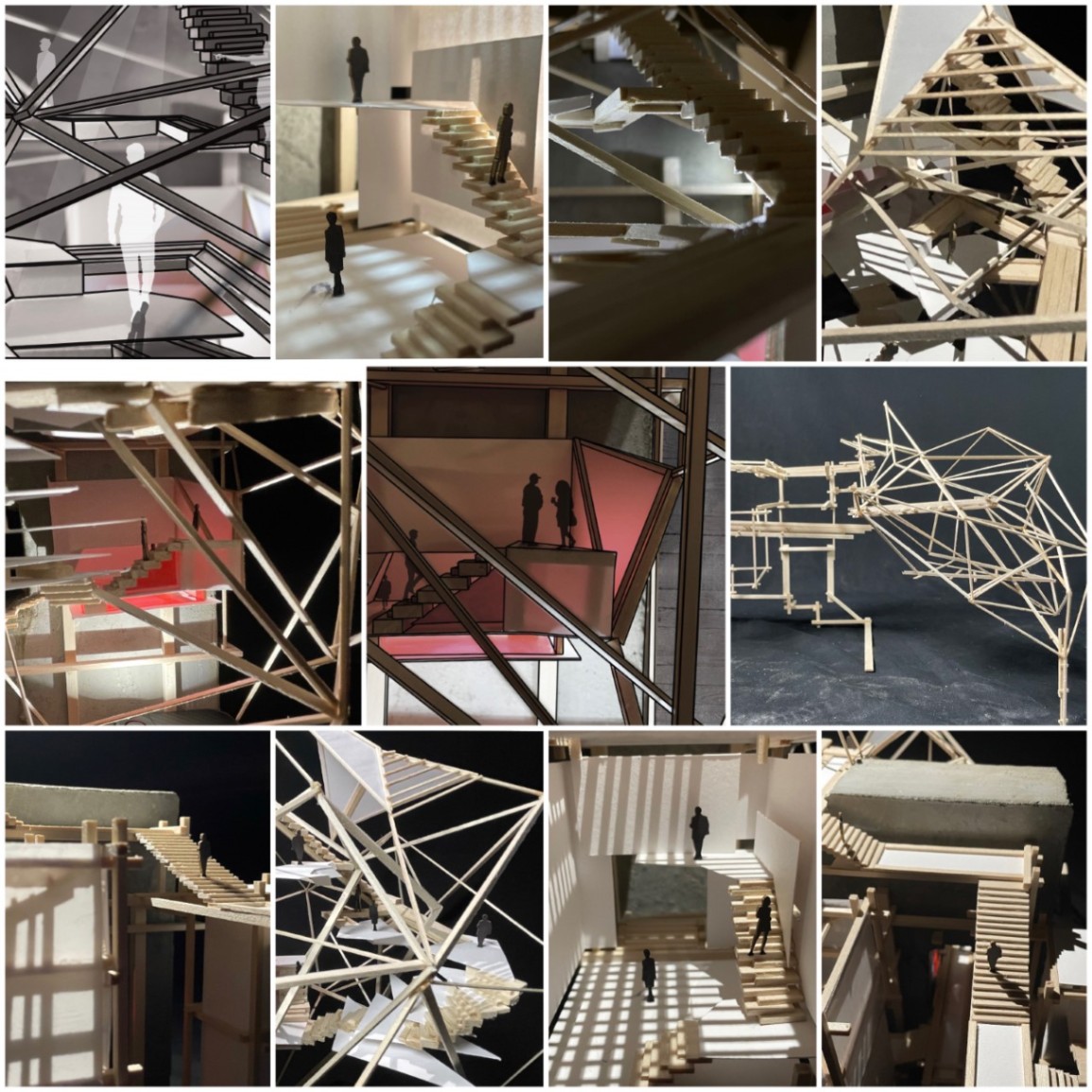Back
The Wall after the War Empathy and improvisation for early design students.
Year: 2022
Category: Cultural Architecture
This research project is an investigation of how empathy could be used as a tool to facilitate spatial understanding and generation in early design pedagogy. Through a process of continuous iteration and improvisation, students evaluate the impact of the designs in a post-war context. To encourage divergent thinking students were encouraged to practice flexibility towards the design by keeping an open-ended outcome throughout the process. We live in an era where social media is a main source of information and data is widely available from questionable sources often normalizing hatred, fear, and dehumanization. Through empathy students were able to place themselves into the project not only as the designers but as users in the space. The methodologies used will be presented through a process of playfulness, mindfulness and improvisation over a 4-week design project. This project challenges students to design three spaces of healing nested into a wall volume. The wall serves as the host and site to the healing journey, it is their own definition of complex masses of destruction and occupation left behind after the War. Each space is required to offer a unique light quality, diffused/direct/chromatic, reflecting on their understandings of emotions through light and shadow in a journey through a wall. Removing all preassigned notions of what the spaces are anticipated end result, proving that good design decisions do not always require preparation. The project prompts students to deal with interstitial spaces of healing nested into the wall while generating a matrix of hidden chronicles. The trauma towards the citizens and culture becomes a series of voids in the volume and opportunities for healing spaces. This project is a contribution to all citizens of the world living under occupation and healing from the trauma of destruction. “I cannot know your name, Nor can you know mine. Tomorrow, we begin together the construction of a city.” Woods, L. (1997).
Savannah focused on the impacts of the built environments on its citizens is largely affected by choices made consciously. The wall proposes a question to the civilians, “If not us, who?”, meaning if they are not the ones to place themselves together by making a choice to rise out of the destruction. Concluding that in order to instill power back into the people, civilians need to distinguish the significance of their own choices made along the way to healing. (Pratt, Savannah 2022)
Fragmentation; explores how remnants trigger an image generation in the brain connecting figurative points to portray the illusion of a wall. The visual of serrated edges reflect the treacherous heartaches conquered through the war. The void in the model is a space of multi-dimensionality pieced by glimpses of the past. Sanguino, Jordan (2022).
This project reflects on the notion of Architecture as self-preservation. Spaces in the model are devices of resistance, forestalling the inevitable challenges of destruction. Rhys decided to find beauty and meaning in the spaces that are protected by the wall boundaries. By creating two distinct forces on either side of the wall, the tectonics threaten the rigidity of the wall. Rhys adds, “--we confront the experiences which we seek to subvert: decay and death. Despite our resistance of entropy, and formation of “civilization” as this effort’s culmination, we remain tied to our natural existence, at once fragile and also wildly and resolutely dedicated to regrowth and flourishing. It is a beautiful expression of humanity when we can react to trauma in a way that honors its effect but defines our resolute will to hold onto our humanity.” Gallagher, Rhys (2022)
Hala Barakat
More by Hala Barakat
View profile


